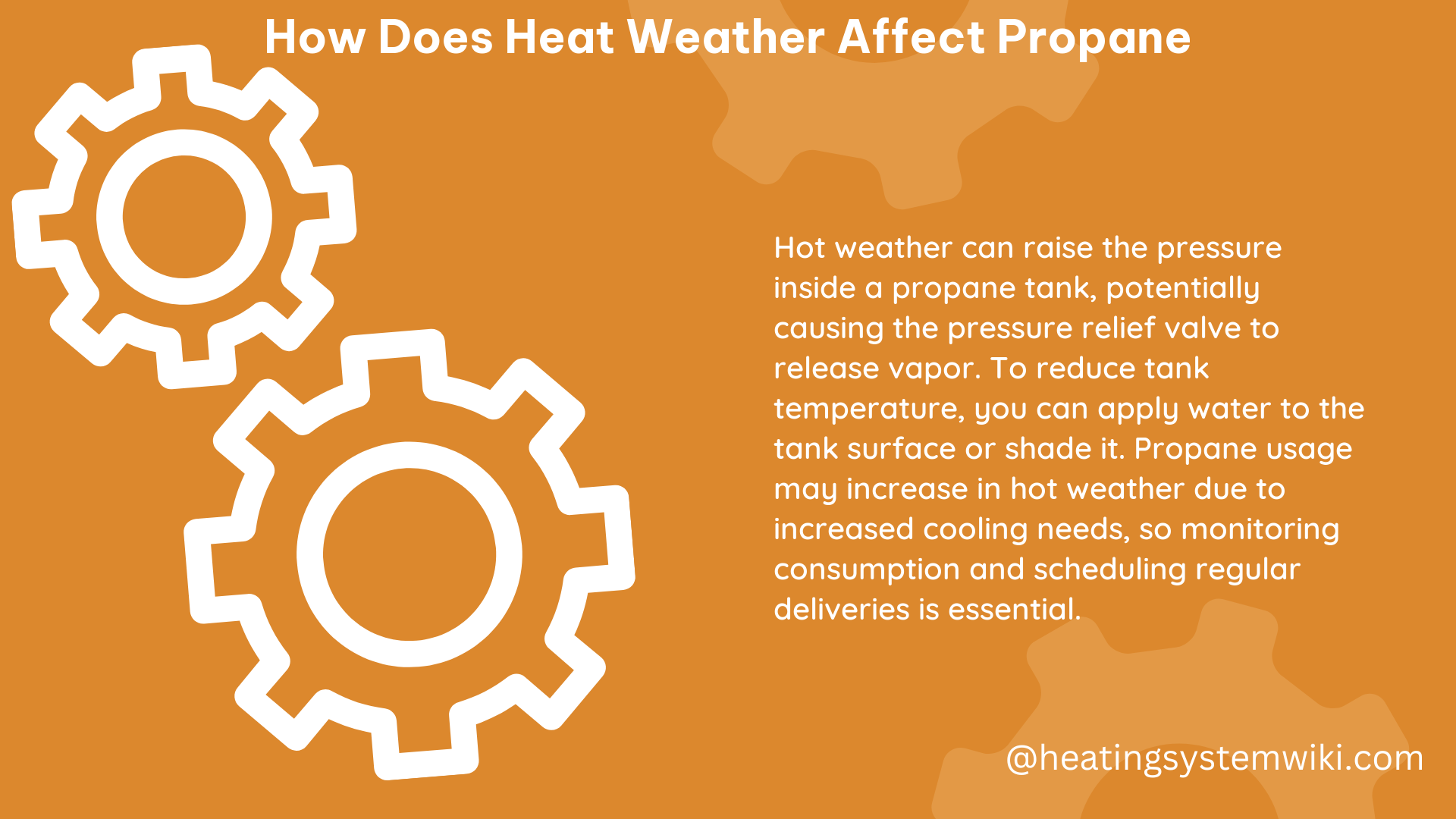Heat weather significantly affects propane in various ways, primarily by increasing its pressure and temperature levels. Understanding these effects and taking necessary precautions can ensure safety and efficient propane usage during hot weather.
Propane Pressure and Temperature Relationship
Propane is stored as a liquid under pressure in tanks. As the temperature rises, the pressure inside the tank increases due to the expansion of propane gas. This expansion can lead to the release of propane vapor through the pressure-relief valve (PRV), a safety feature designed to prevent tank rupture.
The relationship between propane’s pressure and temperature is governed by the ideal gas law, which states that pressure is directly proportional to temperature. Specifically, for every 10°F (5.6°C) increase in temperature, the pressure inside a propane tank increases by approximately 15 psi (1 bar). This means that a propane tank stored in an environment with a temperature of 90°F (32°C) will have a pressure of around 165 psi (11.4 bar), compared to a tank stored at 70°F (21°C), which would have a pressure of around 135 psi (9.3 bar).
Propane Tank Paint and Reflectivity

Propane tanks are required to be painted in light-reflective colors, such as white, grey, and silver, to help them stay cool and reduce heat absorption. This is because darker colors, like black or dark blue, tend to absorb more heat from the sun, leading to a greater increase in the tank’s internal pressure and temperature.
The reflectivity of the tank’s paint is measured by its solar reflectance index (SRI), which ranges from 0 (for a perfectly black surface) to 100 (for a perfectly white surface). Propane tanks with an SRI of at least 29 are considered to have a “cool” surface and are less likely to experience significant pressure and temperature increases during hot weather.
Cooling Down Propane Tanks
Spraying the tank with cool water using a garden hose can help lower the pressure and temperature inside the tank during extremely hot weather. This method works by transferring heat from the tank to the water, which then evaporates, providing a cooling effect.
The effectiveness of this technique depends on factors such as the initial tank temperature, the water temperature, and the duration of the cooling process. As a general guideline, spraying the tank for 5-10 minutes can lower the internal pressure by approximately 10-20 psi (0.7-1.4 bar).
Clearance Around Propane Tanks
Maintaining a clear space of at least 10 feet (3 meters) around the propane tank and grill is essential to prevent the ignition of flammable materials. This clearance zone helps to ensure that any propane vapor released through the pressure-relief valve or during tank connections/disconnections does not come into contact with potential ignition sources, such as open flames, sparks, or hot surfaces.
Propane Usage and Storage
During hot weather, propane usage might increase due to the need for cooling, which can lead to higher consumption and potential shortages. This is because propane-powered appliances, such as air conditioners, may run more frequently to maintain comfortable indoor temperatures.
To mitigate the risk of propane shortages, it’s recommended to monitor your tank’s level and consider refilling it before it reaches a critically low level. Additionally, storing portable propane cylinders outdoors, out of the sun, and away from combustible materials can help prevent pressure buildup and potential safety hazards.
DIY Tips
-
Regularly inspect your propane tank’s pressure-relief valve: Ensure that the pressure-relief valve is functioning correctly and not leaking. This safety feature is crucial in preventing tank rupture during periods of high pressure.
-
Keep your propane tank painted in a light-reflective color: Maintain the light-reflective paint on your propane tank to minimize heat absorption and reduce the impact of high temperatures on the tank’s pressure and temperature.
-
Spray your propane tank with cool water during extremely hot weather: Use a garden hose to spray the tank with cool water, which can help lower the pressure and temperature inside the tank.
-
Maintain a clear space of at least 10 feet around your propane tank and grill: Ensure that the area around your propane tank and grill is free from any flammable materials to prevent the ignition of vapors.
-
Store portable propane cylinders outdoors, out of the sun, and away from combustible materials: Proper storage of portable propane cylinders can help prevent pressure buildup and potential safety hazards.
By understanding the advanced details and technical specifications of how heat weather affects propane, and following the provided DIY tips, you can ensure the safe and efficient use of propane during hot weather conditions.
References:
– Propane Safety and Extreme Heat: 10 Tips to Keep Your Family Safe. (n.d.). Retrieved from https://www.crystalflash.com/support/propane-safety-extreme-heat/
– Will Hot Temperatures Affect My Propane? (2024, May 27). Retrieved from https://www.corsefuels.com/2024/05/27/will-hot-temperatures-affect-my-propane/
– How Do Temperature Changes Affect Propane? | Foster Fuels. (2018, November 28). Retrieved from https://fosterfuels.com/blog/how-do-temperature-changes-affect-propane/
– Extreme Heat Safety – Superior Propane. (n.d.). Retrieved from https://www.superiorpropane.com/for-home/im-a-customer/safety-and-inspections/extreme-heat-safety
